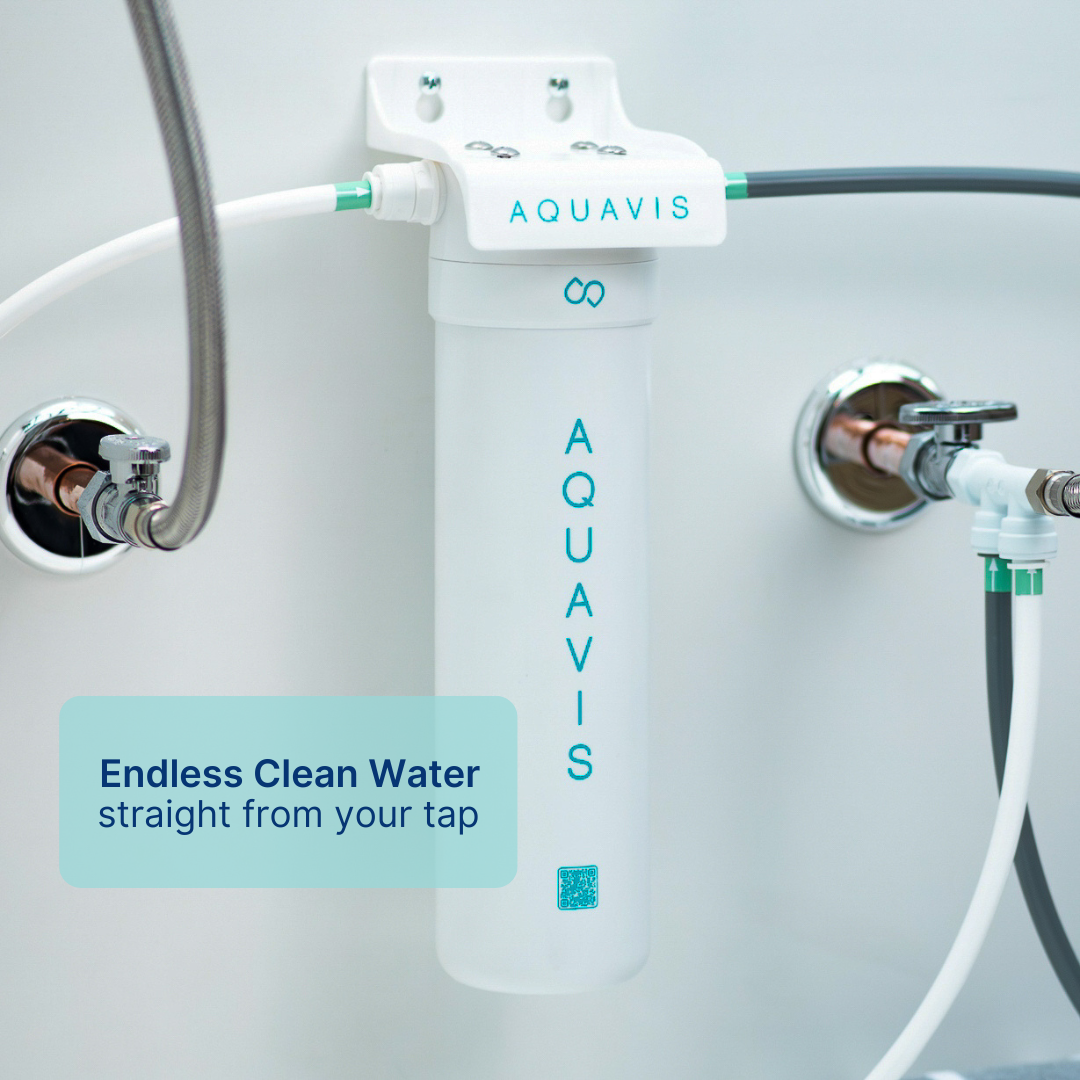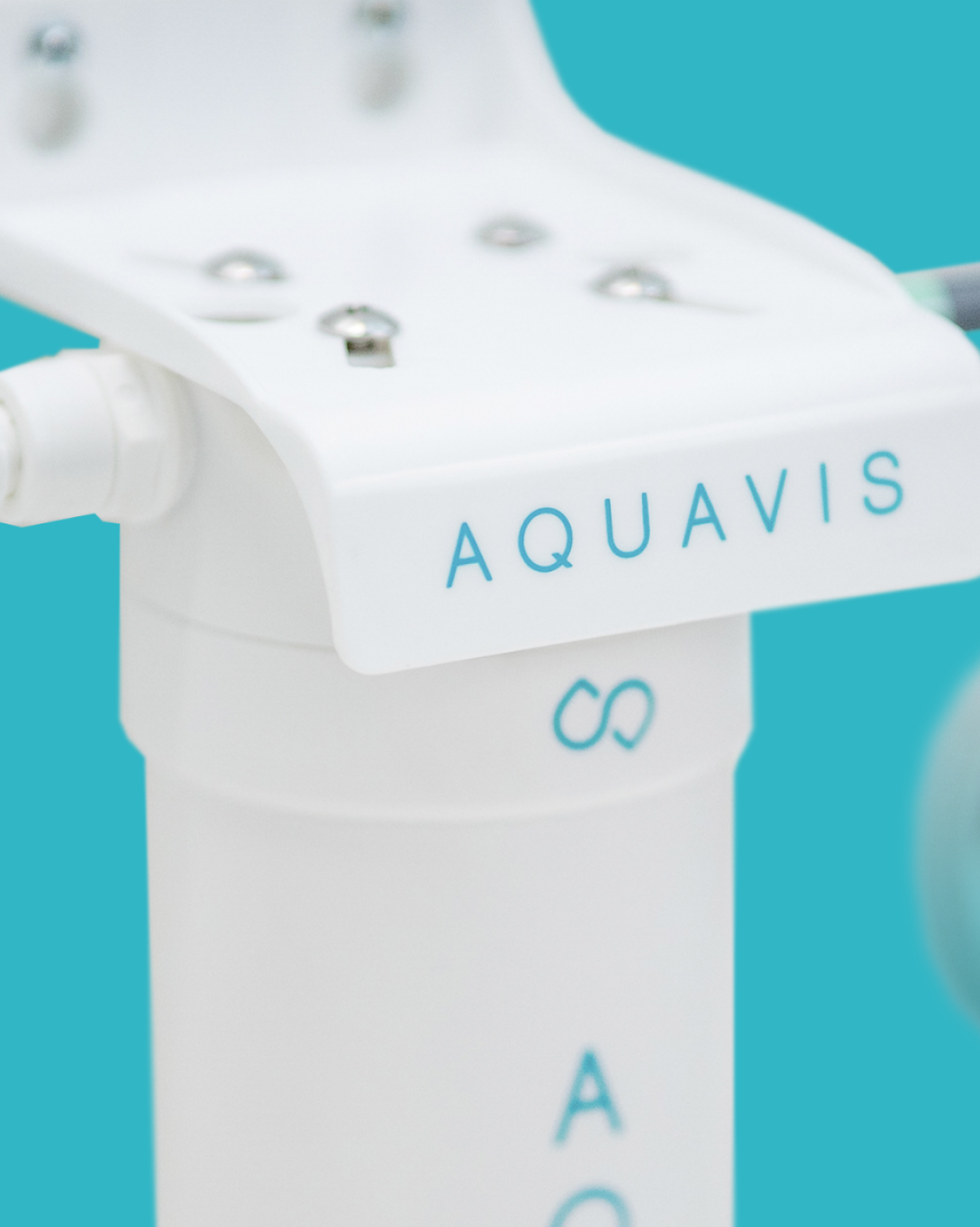While you might not consider yourself a water connoisseur, you've probably noticed that tap water has a distinct taste. In fact, you might even be more partial to the tap water you grew up with as opposed to the water from neighboring cities or states. But what causes this taste difference? Are we simply biased toward the familiar flavor of our hometown water supply?
Though we might prefer the taste of drinking water from our childhood, there is an actual reason for the difference in how water tastes. That taste difference is often dependent on several factors—including the water source—and isn't limited to tap water alone. Regular bottled water, alkaline water, spring water, mineral water, and municipal water all offer a variety of tastes.
Unfortunately, the most affordable and accessible of these options features some pretty unpleasant flavors. So how can you make your family's water supply taste better without breaking the bank?
Good news: we've got just the solution for you! But first, let's explore a little more about where water gets its taste.
Why Does Some Water Taste Better Than Others?
It might seem like all plain water should taste the same. After all, it's just regular water, right?
However, the reality is that while certain water boasts a refreshing taste, other water only offers a bitter taste. This is especially true of water from municipal sources (i.e. tap water). But why do some city water suppliers provide great-tasting water while others leave their water with an unpleasant taste?
What Affects the Taste of Your Tap Water?
When you drink a glass of water from your tap, you're drinking water that has traveled all throughout the city. That's right! Your tap water sees quite a bit of action before it hits your glass.
Most city-provided water runs from its source (i.e. groundwater, runoff, a lake, etc.) to a municipal water treatment plant, through the city water pipes, into your house, and out of your tap. During this journey, the water is exposed to several different environments and contaminants, which affect the taste.
Pollution: Whether municipal water is sourced from groundwater, runoff, or a reservoir, it is subject to pollutants and contaminants which may affect the taste.
Treatment: Most cities treat their water with chemicals to ensure that it's safe to drink. These treatment processes can affect how the water in your home tastes.
Filtration: Some cities use more intense forms of filtration like reverse osmosis systems (RO). While these systems are highly effective in removing contaminants, they can also remove natural minerals that enhance the taste of water.
Why Does Tap Water Taste Bad?
Many people have an aversion to tap water because of its unpleasant odors and tastes. You might think that city water treatment plants are to blame, but there are many reasons why a glass of tap water might taste bad, including treatment methods.
Chemicals
Many public water supplies treat water with harsh chemicals like large amounts of chlorine. While using a high level of chlorine can be a helpful long-term solution for killing harmful microorganisms, it may give drinking water a chlorine taste or chlorine smell. Additionally, ingesting these large amounts of chlorine can be harmful to your family's health.
Minerals
Minerals are often the source of that earthy flavor in our tap water. In general, these minerals occur naturally, although many city governments artificially add fluoride into their water supplies. Over-mineralization can leave water with a salty taste and have adverse impacts on health.
On the other hand, de-mineralized water can also negatively affect the taste. If a city uses a filtration or softening system like RO or ion-exchange, the resulting water is stripped of many helpful minerals that are necessary for our dental and overall health. Finding a mineral balance is key to great-tasting, healthy water.
Contaminants
On its long journey from source to sink, your tap water can pick up some unfriendly hitchhikers that cause water to have an unpleasant taste. These contaminants may include volatile organic compounds (VOCs), dissolved metals and other total dissolved solids (TDS), or other inorganic materials.
Even naturally occurring pollutants such as hydrogen sulfide can find their way into your water source, ultimately affecting the taste and smell of tap water.
Many contaminants can seep into the water source through the ground or be carried into the supply by other natural means. If the water source is close to an industrial site, for example, chemicals and pollutants may be carried by the wind, seep through the ground, or be spilled into the water.
The water source isn't the only place our tap water might run into contaminants. As the water travels to its next destination, it can also pick up harmful contaminants in the city pipelines. Heavy metals like lead and iron, along with bacteria and dissolved salts may be transported to your tap through contaminated pipelines, causing an unappealing, metallic taste.
Can the Taste of Tap Water Be Improved?
With so many factors contributing to the taste, it's no wonder many people steer clear of tap water altogether. Unfortunately, this usually means that they're spending unnecessary money on bottled water or bulky filtration systems.
But do we have to sacrifice convenience and affordability just to enjoy the clean taste of good water? Absolutely not! There are many ways to improve the taste of your tap water, giving you the ideal solution to your quest for clean, tasty water in your home.
How to Improve the Taste of Your Tap Water
With a bit of effort, you can turn your tap from bitter-tasting water to the best-tasting water. There are a few different methods you can use to rid your water of its bad taste, but not all of them will give you clean water as well.
Let the Water Sit
If you've ever woken up in the middle of the night to take a drink from the day-old glass of water on your nightstand, you've probably noticed that it tastes a little different. Leaving water out can promote the growth of acidic compounds that change the water's pH level, thus affecting the flavor.
While letting water sit for a day may slightly improve its flavor, leaving it out for longer can cause a stale flavor. Water left out for too long can also begin to grow bacteria that are harmful to your health. Additionally, letting your water sit at room temperature before you drink it means that you can't enjoy a refreshing glass of good-tasting, cold water.
This method might work in some cases, but it isn't a long-term solution to your water's taste.
Add Flavor to the Water
Many households improve their tap water taste and cover bad odors by adding artificial and natural flavors to the water. Many artificial fruit juice flavorings or citrus fruit infusions can effectively mask the taste of tap water, while adding a little flair to your drink. However, many of the artificial options also come with added sugars or dyes, making them less healthy than plain water. And unfortunately, healthy alternatives like natural fruits and herbs don't mask bad tastes as effectively.
This method may improve the flavor, but it doesn't improve the quality of tap water. Whether you can taste them or not, contaminants in your tap water may still be affecting your family's health.
Boil the Water
Another way to address the taste of tap water is by boiling it. Boiling water can remove chlorine and bacteria, helping to improve the taste. This method won't remove all contaminants from tap water, but it can remove some. And unless you're partial to drinking hot water, this method also necessitates a wait time before you're able to enjoy your water.
Like previous solutions, this option isn't as practical for many individuals, but may work in certain circumstances.
Use a Water Filter
Investing in a water filter can not only help address your tap water taste issues, but also the contaminants within the water. Water filters can remove chlorine, heavy metals, excess minerals, and other contaminants that may pose health risks.
Different Types of Filtration Systems
Pitcher and Countertop Filters
There are many different types of water filters. Pitcher and countertop filters effectively improve tap water taste and quality by filtering out some contaminants like chlorine. While these filters are a step up from letting water sit out, they still require regular filling and a bit of a wait time before you're able to enjoy your newly-filtered water.
Fridge Filters
Fridge filters help address tap water taste concerns while removing some contaminants, as well. However, sometimes these systems require professional maintenance and can often be expensive to replace or repair. As suggested by their name, fridge filters only apply to one one source—the fridge—limiting your ability to use filtered water for cooking. Additionally, most fridge filters have a slow flow time, making them less convenient for filling large containers of water.
Whole-House Filters
Whole-house filters can thoroughly cleanse all the water in your home, removing contaminants and bad tastes. While these filters can be very effective, they're often expensive, bulky, and complicated, requiring professional installation and maintenance. Whole-house filters also unnecessarily filter water in bathrooms and laundry rooms, making them over-effective for most family's everyday needs.
Under-Sink Filters
Under-sink filters like the Aquavis Pulse can remove many contaminants and improve the taste of your tap water. Unlike other under-sink filters like reverse osmosis systems, the Aquavis Pulse keeps beneficial minerals in your water to aid with taste and health.
Our activated carbon filter attaches directly under your sink—no professional help needed. Plus, thanks to its compact size, this filter can easily fit under most kitchen and bathroom sinks, allowing you to customize your tap water quality throughout the house.
Bad-Tasting Water? Aquavis Can Help!
If you live in an area that's known for its less-than-tasty tap water, all is not lost! Aquavis can revitalize your family's water supply and save you money on water bottles and flavor pouches. Using activated carbon technology, our under-sink water filters adsorb harmful contaminants like PFAS, VOCs, lead, and chlorine, leaving you with healthy, hydrating, and delicious water.
Check out Aquavis today to give your house a tap-water makeover!


